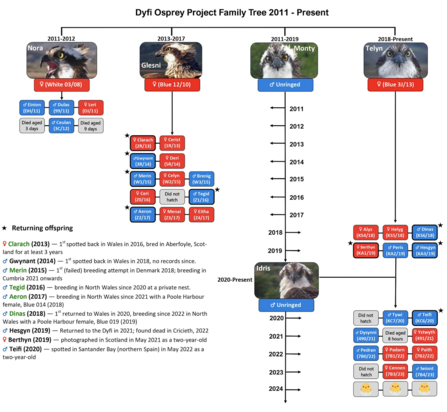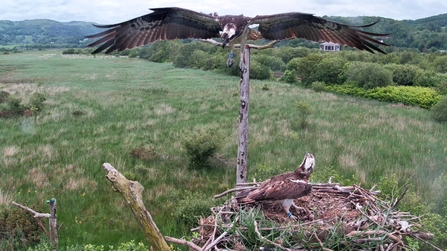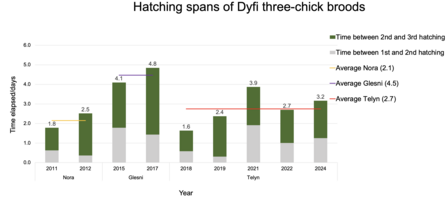🐣 - Chick 1 Hatches at 01:35 on 21st May
🐣🐣 - Chick 2 Hatches at 07:37 on 22nd May
🐣🐣🐣 - Chick 3 Hatches at 05:31 on 24th May
Telyn has laid three eggs every year since she started at the Dyfi and all three chicks have hatched in five of those seven years. That is some record.
The 2024 eggs hatched in sequence, the gap between all three chicks being just over three days (half the time it took to lay them).
For reference, below is the Dyfi family tree, this is our 15th year of successful breeding. The list bottom left is of all our offspring that have been spotted having returned as adults, the green ones have, or are, breeding for themselves:




